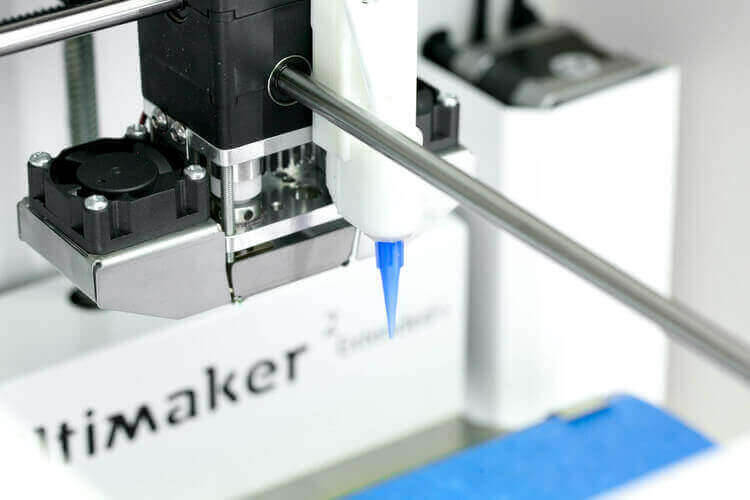Proving 3D printing chocolate can be a desktop thing, Structur3D releases video demoing chocolate extrusion and an Ultimaker printer bundle.
We haven’t covered the Discov3ry paste extruder much on All3DP. We featured it in passing in our overview on 3D printing chocolate. But only now has the Canadian firm behind it captured our attention with a short video showcasing the extruder’s chocolaty capabilities.
The Discov3ry is a cartridge-based paste extruder kit that works with most desktop FDM printers. Thanks to a tie-up with Ultimaker, they also offer specific integration kits for their open-source machines.
In addition to this, they also sell the Discov3ry Complete – the extruder pre-integrated and bundled with the Ultimaker 2+.
Machines running on proprietary hardware may require tinkering or consultation with the manufacturer to get the Disco3ry working. Generally speaking, machines using RAMPS/Arduino control systems will play nice with the it.
It seems that the only limiting factor for what you can print with this extruder is the viscosity. Claims of Nutella, marshmallow, royal icing and – less appetizing – silicone gives you an idea of this component’s capabilities.
The Structur3D team got creative in their latest demo, loading a 50-50 mix of milk and white chocolate chips after a short blast in the microwave. Using a 1.5mm nozzle, 1mm layer height and 20mm/s speed, they successfully printed a star. Check it out in the video below.
https://www.youtube.com/watch?v=KrR_xOnTUPc
So What Else Can The Discov3ry Do?
The extruder assembly features food-safe tubing. However, this doesn’t mean food is the Discov3ry Complete’s only application.
Often referred to as room-temperature vulcanizing molding, the extrusion of liquid silicone allows for prototyping and testing in a similar manner to plastic FDM. Because of this, silicone presents a practical solution in the traditional sense of 3D printing.
Andrew Finkle, the CTO of Structur3D explains a case usage printing shoe inserts:
“The proof-of-concept orthotics were done using RTV silicone caulk, which is great for prototyping and design optimization. However, due to the acetic acid by-product, this material wouldn’t be suitable for direct, prolonged skin contact. For a real-world, patient-specific print, we’d use medical grade silicone, which is platinum cured.”
The Discov3ry Complete comes with nozzle tips as small as 0.1mm, meaning it’s possible to fabricate detailed silicone parts. This opens the door to small batch manufacturing of specialist parts without the need for injection molding.
Other companies have made similar strides in the printing of silicone. Just last year British company Fripp Design and Research patented its Picsima process. Similarly, students at Delft University of Technology in the Netherlands pioneered a 3D printing-mold casting process for soft robotics.
Source: Ultimaker Blog

License: The text of "Structur3D & Ultimaker Find Sweet Spot With Discov3ry Complete" by All3DP is licensed under a Creative Commons Attribution 4.0 International License.